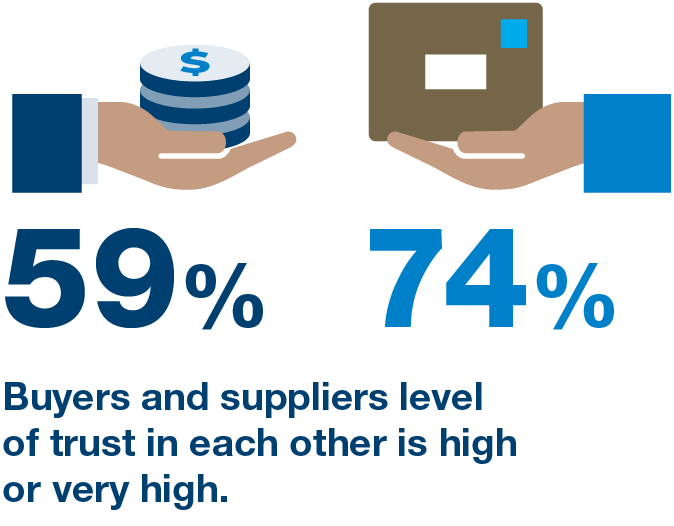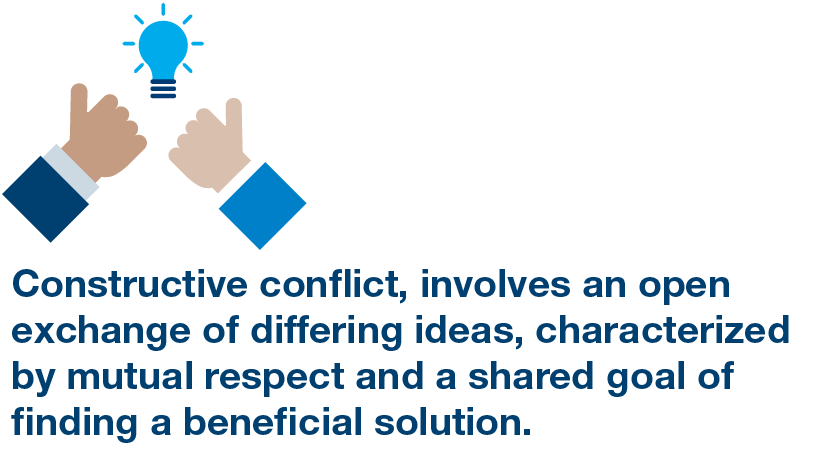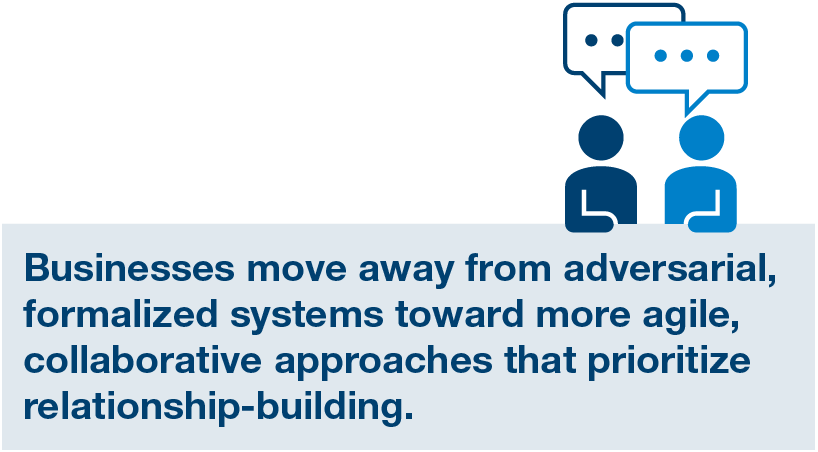Executive summary
Most organizations aspire to build collaborative relationships with customers and suppliers, and many believe that their efforts are effective. This report challenges that perception by revealing the frequency of ongoing conflicts and the extent to which they are allowed to damage performance.
Communication breakdowns and misaligned objectives often lie at the heart of these tensions and, with the volatility of today’s market conditions, the potential for conflict is increasing. It is important to understand why these issues arise and to explore the underlying factors that shape perceptions and behaviours on both sides. However, the real purpose of this report is to set out ways that evolving contracting processes, from initial agreement to post-signature interactions, can be optimized to drive more effective, long-term partnerships.
Our research confirms that the volume and severity of disputes varies by industry and, to a degree, by culture. The question of culture is also significant in the way that disagreements are resolved – for example, disputes that occur in the United States are far more likely to lead to litigation than in any other geography; those in Japan are very unlikely to result in litigation.


It may seem obvious that conflicts and disputes represent a core indicator of relationship health, yet our research confirms that few organizations actively monitor their frequency, their underlying causes or ways that negative consequences can be diminished or avoided.
Ultimately, this report challenges businesses to rethink how they approach conflict. By moving away from transactional thinking and toward a more relationship-driven approach, companies will create stronger, more resilient partnerships that deliver better results. The insights provided in this report not only capture the current state of the industry, but also offer valuable data to anticipate future trends so that businesses can adapt for sustained success.
Call to Action: Turning Insight into Action
For Executives
For Practitioners
Embed conflict metrics
Invest in post-award capability
Shift incentives and behavior
Redesign contracts for flexibility
Reduce over-reliance on external advisors
Clarify ambiguities early
Document decisions and deviations
Surface issues promptly
Engage in open dialogue
Learn and apply
Conclusion
This research underscores the critical need for businesses to review their approach to conflict and collaboration within commercial relationships. While conflict is an inevitable aspect of the business landscape, it does not have to result in negative outcomes. Instead, it can serve as a pivotal opportunity for recalibrating partnerships, addressing underlying issues, and strengthening relationships.
The findings underscore a noticeable gap between the perceived effectiveness of traditional conflict resolution models and the reality of their impact, particularly in terms of slowing resolution processes and potentially damaging long-term relationships. As both buyers and suppliers increasingly recognize the importance of collaboration, the need to move away from adversarial methods toward more cooperative, negotiation-based approaches is clear. Traditional methods—such as those involving law firms, advisories, or consultancies—are increasingly seen as inefficient, often delaying resolution and, more importantly, undermining trust and collaboration. Over a third of respondents indicated that these methods hinder the speed of resolution, and more than half felt they negatively affect the strength of customer-supplier relationships. This highlights the need for businesses to move away from adversarial, formalized systems toward more agile, collaborative approaches that prioritize relationship-building.


The research further identifies the root causes of conflict—such as ambiguous or missing contract terms, misaligned expectations, and evolving business needs—that, if not addressed proactively, can cause long-term strain on partnerships. Despite the prevalence of disputes, most buyers and suppliers reported strong relationships, suggesting that, when managed effectively, conflicts need not lead to lasting damage. This insight presents a valuable opportunity for businesses to not only resolve disputes but also build frameworks to prevent them in the first place, ensuring smoother, more productive interactions.
Written by
Tim Cummins

An international, cross-industry career that has moved from corporate management to extensive research, advisory and capability development services to public, private and third sector organisations. Tim has lived and worked in the UK, France (3 years), and the United States (20 years), building an impressive research and entrepreneurial record with a demonstrated commitment to delivering social benefit. As Founder and President of World Commerce & Contracting (formerly International Association for Contract & Commercial Management), Tim has built a 72,000-member worldwide non-profit association which increasingly influences commercial policies and contracting practices in major corporations and governments. In September 2019, he was presented with the Financial Times ‘Market Shaper of the Year Award. Tim was, until recently, Professor and Chair of International Commercial & Contract Management at the University of Leeds, School of Law, where he taught and led the development of inter-disciplinary commercial programs. Prior to founding World Commerce & Contracting, Tim was on the Chairman’s staff at IBM Corporation and led the development of worldwide commercial processes and skills. His early career included management roles in the banking, automotive and aerospace industries, where he led negotiations up to $1.5 billion in value. He has served in advisory roles for government departments in various countries, including the US, UK, Australia, Canada, and Japan.
Fayola-Maria Jack

Fay is a specialist in complex commercial transactions and dispute resolution, and the Founder of Resolutiion - an AI-powered system for managing conflict, disagreements and disputes between businesses. With experience as Head of Legal for a $25bn multinational and Head of Legal & Commercial for a Fortune company, she has overseen operations up to $5.7bn and managed teams of over 30,000. Internationally recognised with awards such as Top 5 Women in UK Business by Management Today, Fay has led a series of key initiatives, including Brexit commercial assurance for the Cabinet Office and establishing dispute resolution practices for Lloyds Banking Group. An accomplished thought leader with an MBA from UCL and doctoral research in dispute resolution, she now drives Resolutiion with a mission to usher in an age of stronger, more resilient commercial relationships globally.
Become a member
Join now to access a range of benefits as part of the world's largest commerce and contracting community.
- Become part of a global community and connect with other members at events and on online forums.
- Participate in live webinars and sponsored webcasts with thought leaders and experts.
- Attend local networking groups and regional or international conferences.
- Access the latest research, reports, analytics, best practice templates and thought-leadership articles.
- Become certified with our globally recognized training programs.
- Gain one-on-one mentorship from our experts.
- Receive regular news and industry updates.
- Search and post jobs on our members job board.
- Raise your professional reputation by contributing to our Content Hub, joining working groups, speaking at conferences, and contributing to research.





